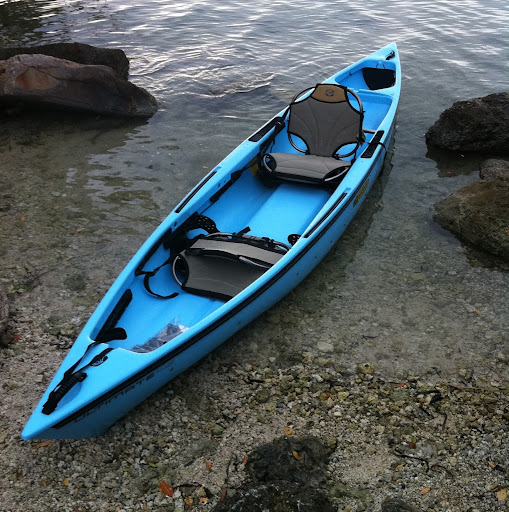Thomas M Harkins
age ~75
from Ellijay, GA
- Also known as:
-
- Tommy M Harkins
- Rachel Harkins
- Phone and address:
- 216 Mount Pleasant Dr, Ellijay, GA 30540
Thomas Harkins Phones & Addresses
- 216 Mount Pleasant Dr, Ellijay, GA 30540
- Lost Creek, KY
- Joppa, MD
- Blue Ridge, GA
Name / Title
Company / Classification
Phones & Addresses
President,Director
JTH DEVELOPMENT COMPANY
Us Patents
-
Drag-Brake Deployment Method And Apparatus For Range Error Correction Of Spinning, Gun-Launched Artillery Projectiles
view source -
US Patent:6345785, Feb 12, 2002
-
Filed:Nov 7, 2000
-
Appl. No.:09/708242
-
Inventors:Thomas E. Harkins - Joppa MD
Bradford S. Davis - Jarrettsville MD -
Assignee:The United States of America as represented by the Secretary of the Army - Washington DC
-
International Classification:F42B 1000
-
US Classification:244 323, 244 31, 244 321
-
Abstract:In a projectile launched by a gun, the projectile including a fuze with a longitudinal axis of symmetry and a braking device, an apparatus disposed in the fuze for determining a time of deployment of the braking device, the apparatus including a first accelerometer having a sense axis and mounted with its sense axis coincident with the longitudinal axis of symmetry of the fuze; a second accelerometer having a sense axis and mounted a known axial distance from the first accelerometer and with its sense axis coincident with the longitudinal axis of symmetry of the fuze; a magnetometer having a sense axis and mounted with its sense axis orthogonal to the longitudinal axis of symmetry of the fuze; a field-programmable memory unit loaded with aiming data of the gun, magnetic field direction at the gun, a nominal path length table, and a braking device maneuver authority table; and a microprocessor connected to the first and second accelerometers, the magnetometer, the field-programmable memory unit and the braking device.
-
System And Method For Reducing Dispersion Of Small Rockets
view source -
US Patent:6347763, Feb 19, 2002
-
Filed:Jan 2, 2000
-
Appl. No.:09/751925
-
Inventors:Thomas E. Harkins - Joppa MD
T. Gordon Brown - Abingdon MD -
Assignee:The United States of America as represented by the Secretary of the Army - Washington DC
-
International Classification:F42B 1002
-
US Classification:244 321, 244 315
-
Abstract:An active damping method and a self-contained active damping system that can be retrofitted to existing rockets are provided which for reducing the dispersion of rockets by using lateral thrusters to oppose any initial yawing motion. The self-contained system of the present invention can be installed in a cylindrical section of a rocket body by insertion between other flight body parts.
-
Aeroballistic Diagnostic System
view source -
US Patent:6349652, Feb 26, 2002
-
Filed:Jan 29, 2001
-
Appl. No.:09/770780
-
Inventors:David J. Hepner - Elkton MD
Michael S. L. Hollis - Abingdon MD
Peter C. Muller - Abingdon MD
Thomas E. Harkins - Joppa MD
Gary Borgen - Camarillo CA
William P. DAmico - Havre de Grace MD
Bradford S. Davis - Jarrettsville MD
Lawrence W. Burke - Pylesville MD -
Assignee:The United States of America as represented by the Secretary of the Army - Washington DC
-
International Classification:F42B 1000
-
US Classification:102519, 244 32, 244 323, 898 6, 898 65
-
Abstract:A system which is packaged within a projectile fuze body and obtains data relative to the projectile during a launch. Sensors are provided which obtain in-bore data as well as in-flight data. The in-bore data is recorded at a fast rate during in-bore travel of the projectile and is read out, continuously, at a slower rate during in-flight travel. Both in-bore data and in-flight data are encoded and transmitted to a ground station for analysis.
-
Method And System For Determining The Pointing Direction Of A Body In Flight
view source -
US Patent:6398155, Jun 4, 2002
-
Filed:Jan 2, 2001
-
Appl. No.:09/751924
-
Inventors:David J. Hepner - Elkton MD
Thomas E. Harkins - Joppa MD -
Assignee:The United States of America as represented by the Secretary of the Army - Washington DC
-
International Classification:F41G 700
-
US Classification:244 315, 244 316, 244 317, 244 319, 244 321, 342 63
-
Abstract:A method to determine the direction in which a spinning projectile is traveling. A solar sensor array on the projectile is used to calculate the orientation of the axis of rotation of the projectile with respect to a known solar field and a magnetometer sensor array is used to calculate the orientation of the axis of rotation of the projectile with respect to a known magnetic field, both fields being represented by respective vectors having magnitude and direction. With the known and calculated orientations, the pointing direction may be obtained by vector combination.
-
Method And System For Determining Magnetic Attitude
view source -
US Patent:6493651, Dec 10, 2002
-
Filed:Dec 18, 2000
-
Appl. No.:09/740762
-
Inventors:Thomas E. Harkins - Joppa MD
David J. Hepner - Elkton MD
Bradford Davis - Jarrettsville MD -
Assignee:The United States of America as represented by the Secretary of the Army - Washington DC
-
International Classification:G01C 1700
-
US Classification:702151, 32420715, 344 315, 3561412
-
Abstract:A system which derives the attitude of a body as it rotates and travels through the earths magnetic field. At least one magnetometer is placed in the body and provides an output signal during flight of the body. The zero crossings of the output signal are used to formulate a time discriminant. This time discriminant is compared with a roll angle discriminant for which a value of attitude has been previously determined. From the comparison, the attitude during flight may be determined. A time discriminant can also be formulated using two magnetometers.
Resumes

Thomas Harkins
view source
Thomas Harkins
view source
Thomas Harkins
view sourceLocation:
United States
Youtube

John Thomas Harkins
view source
Thomas Harkins
view source
Thomas Hacky Harkins
view source
Thomas Harkins
view source
Thomas Harkins
view sourcePlaxo

Thomas Harkins
view sourcePipersville, PARetired
Googleplus

Thomas Harkins

Thomas Harkins

Thomas Harkins

Thomas Harkins
Get Report for Thomas M Harkins from Ellijay, GA, age ~75





